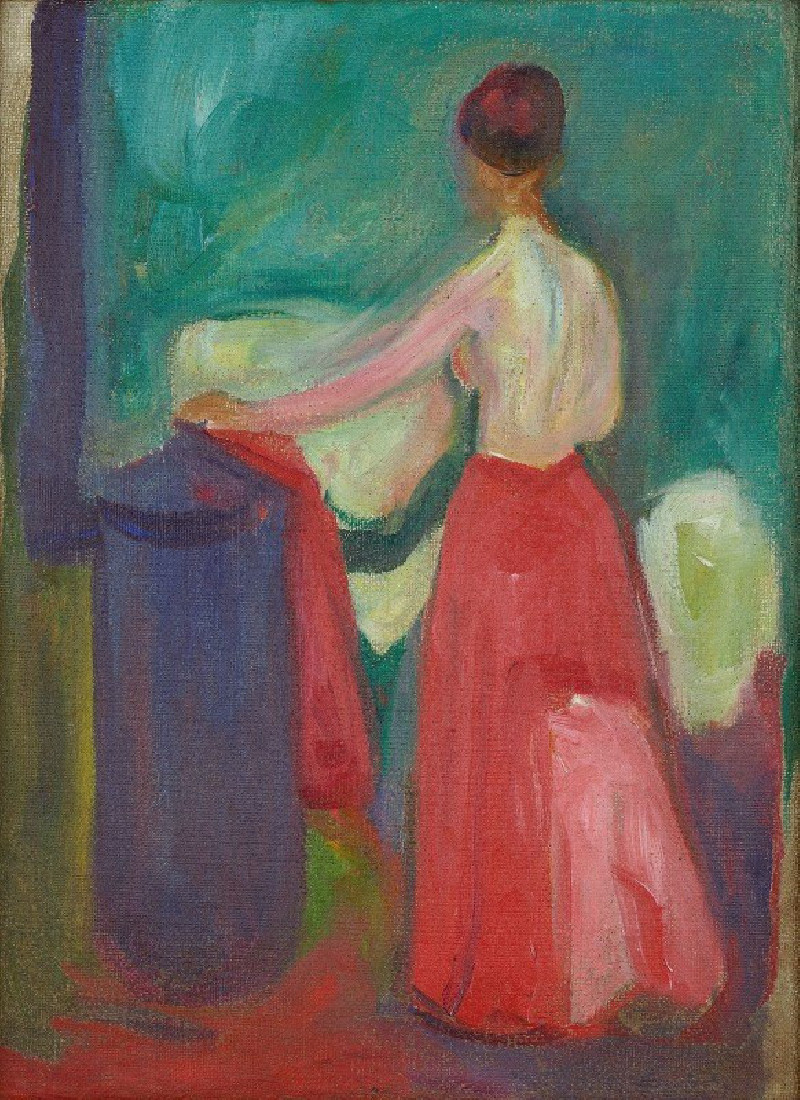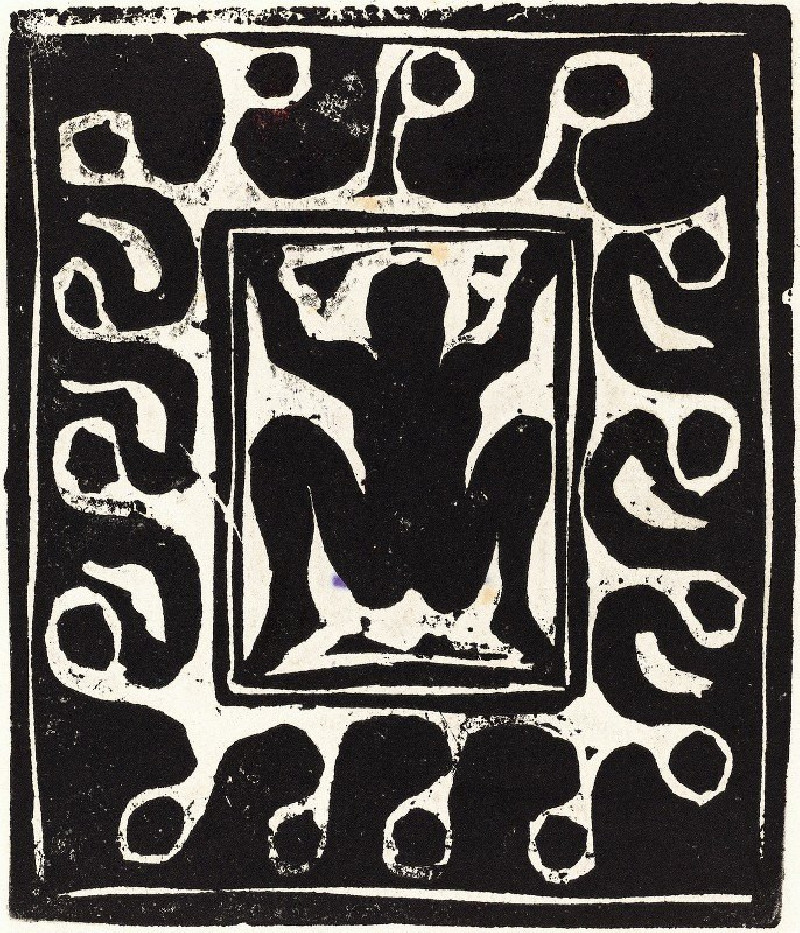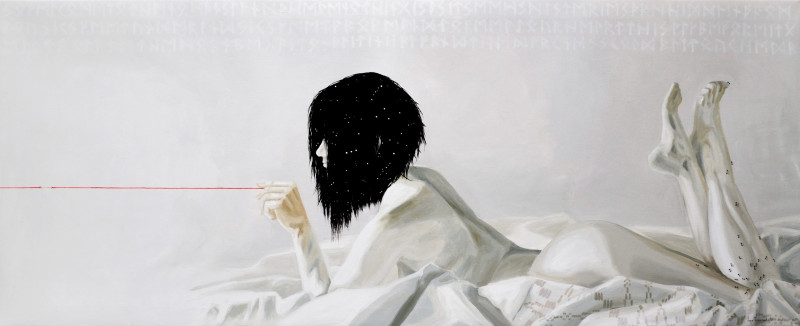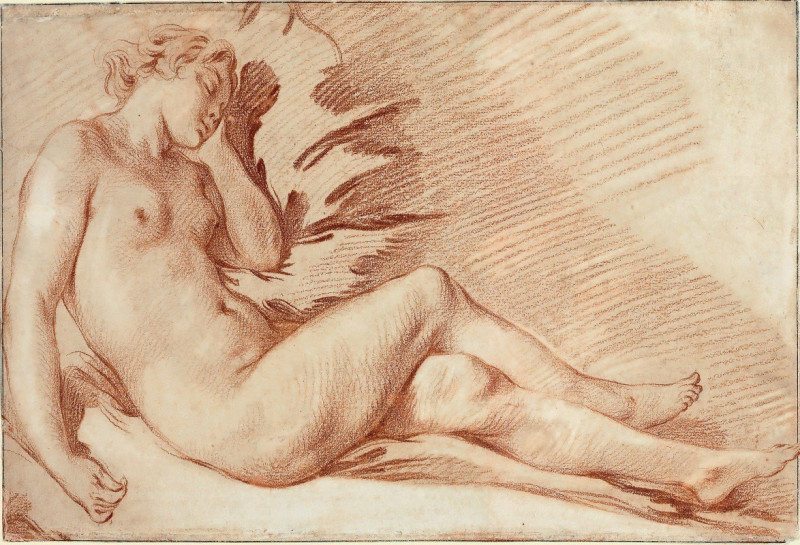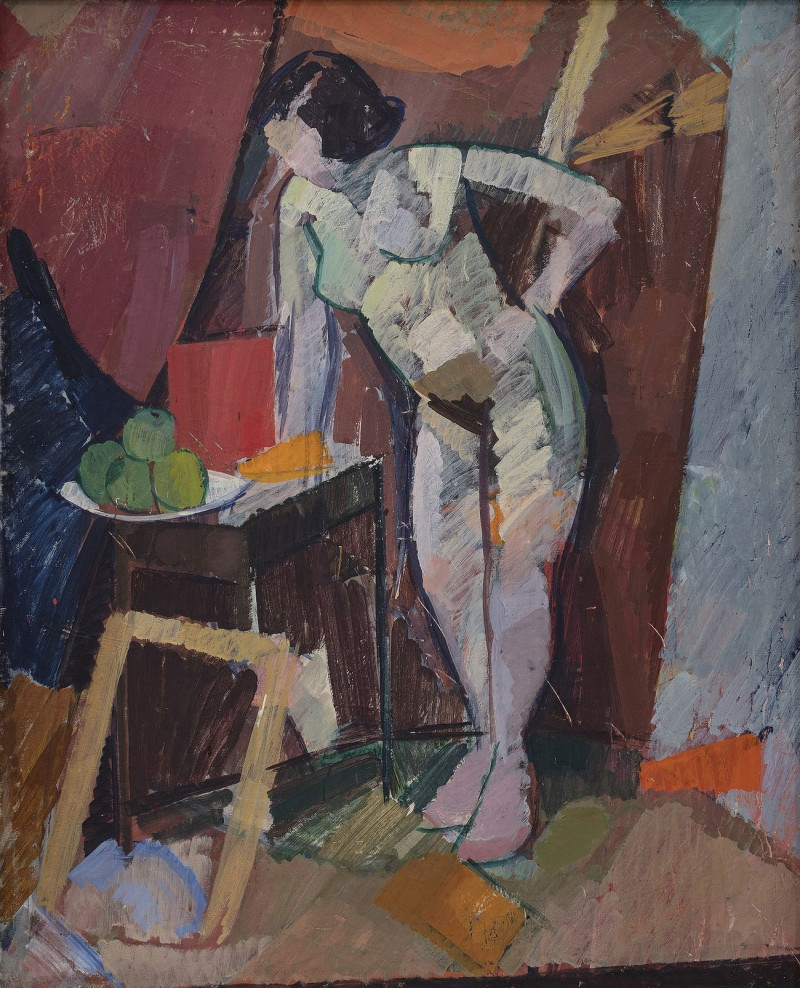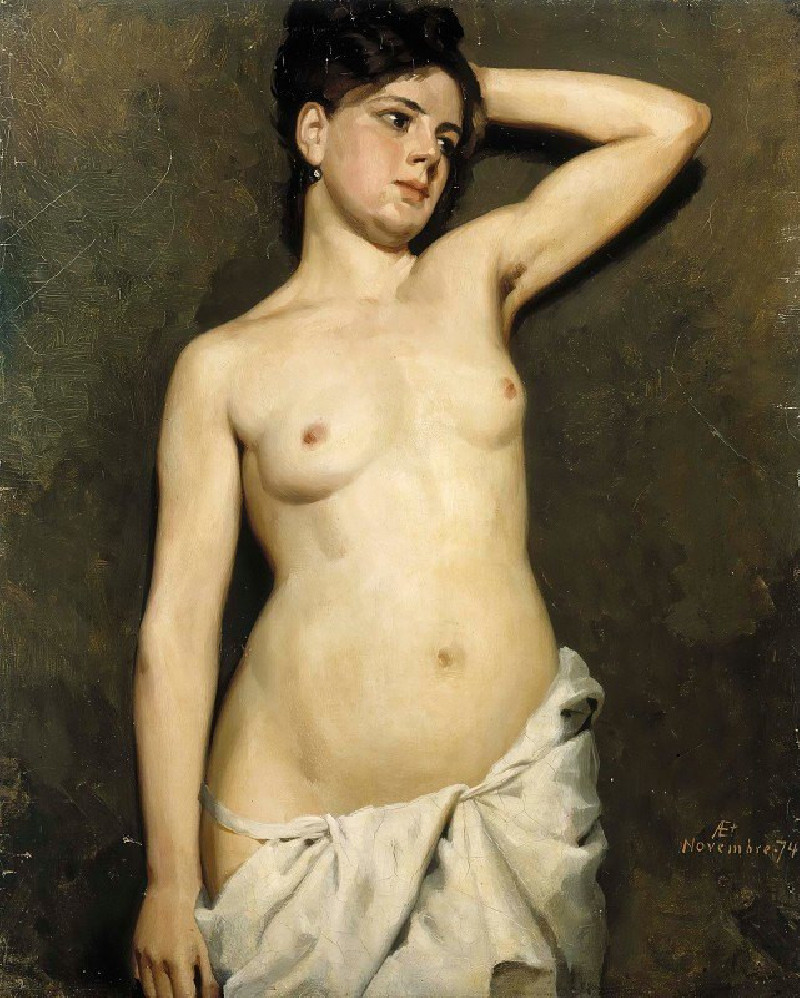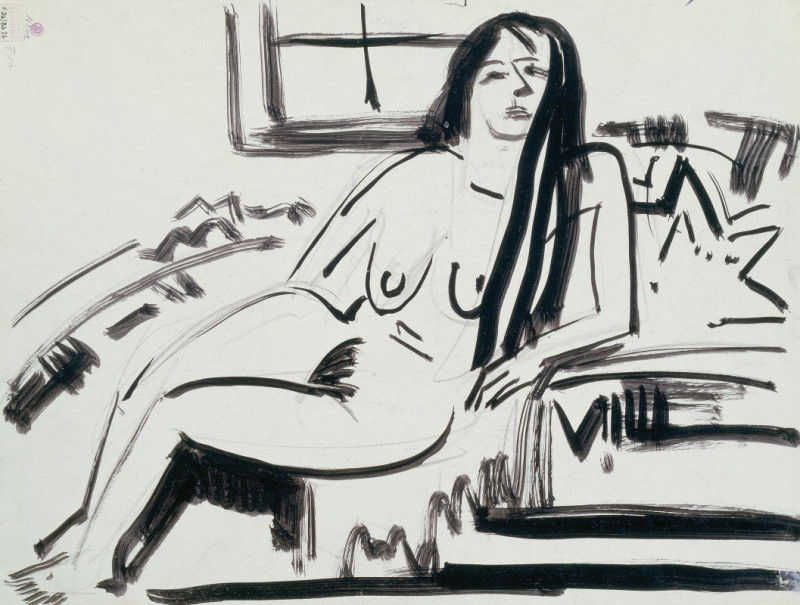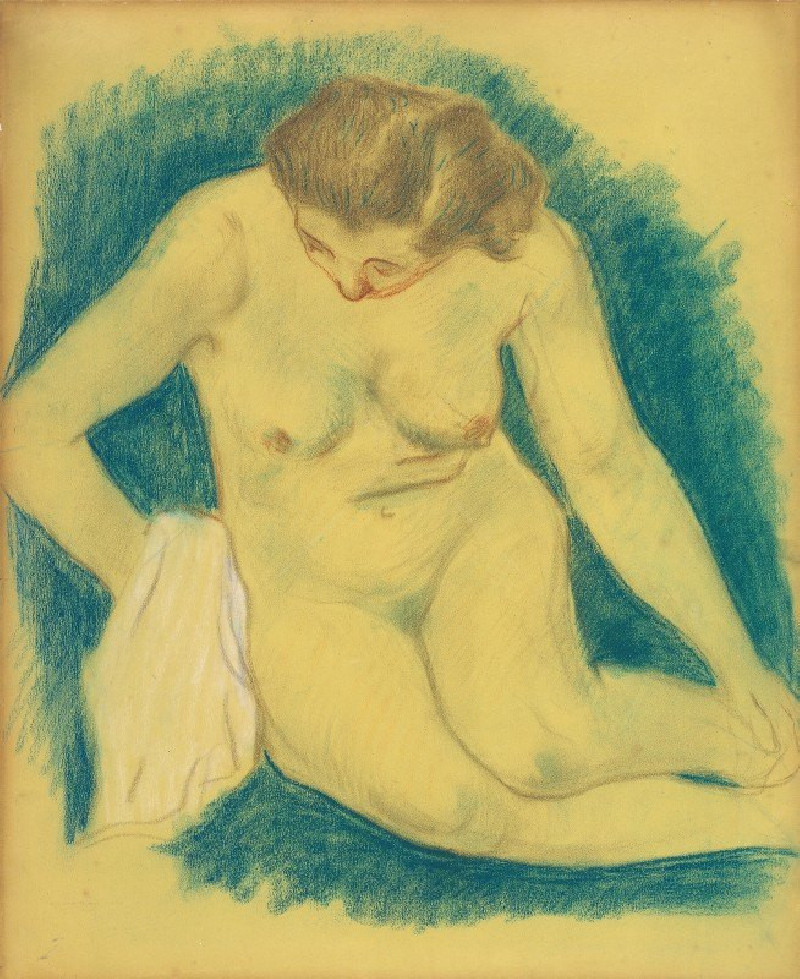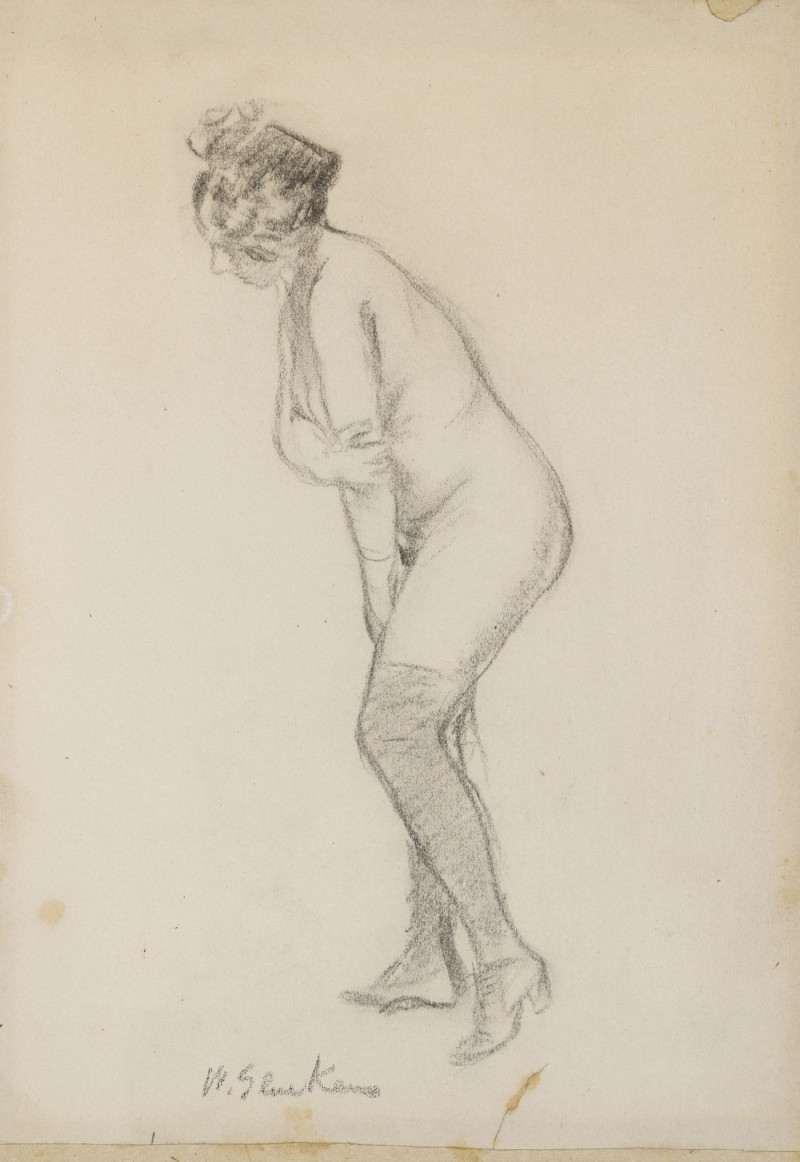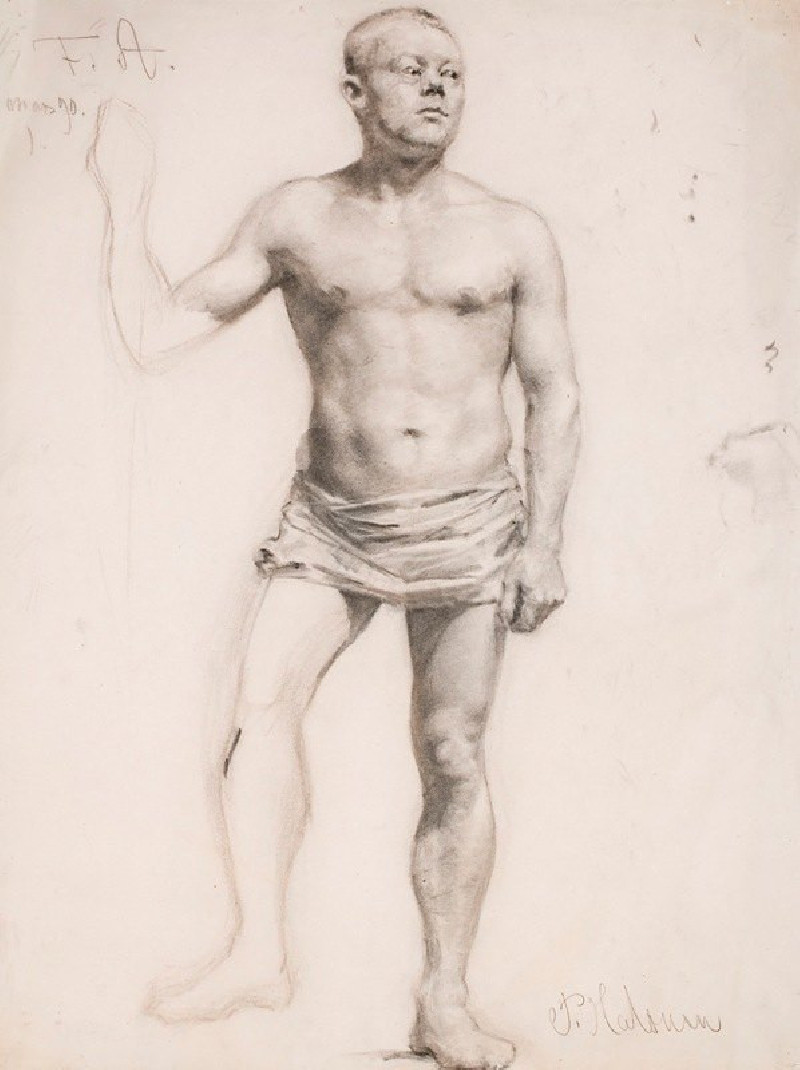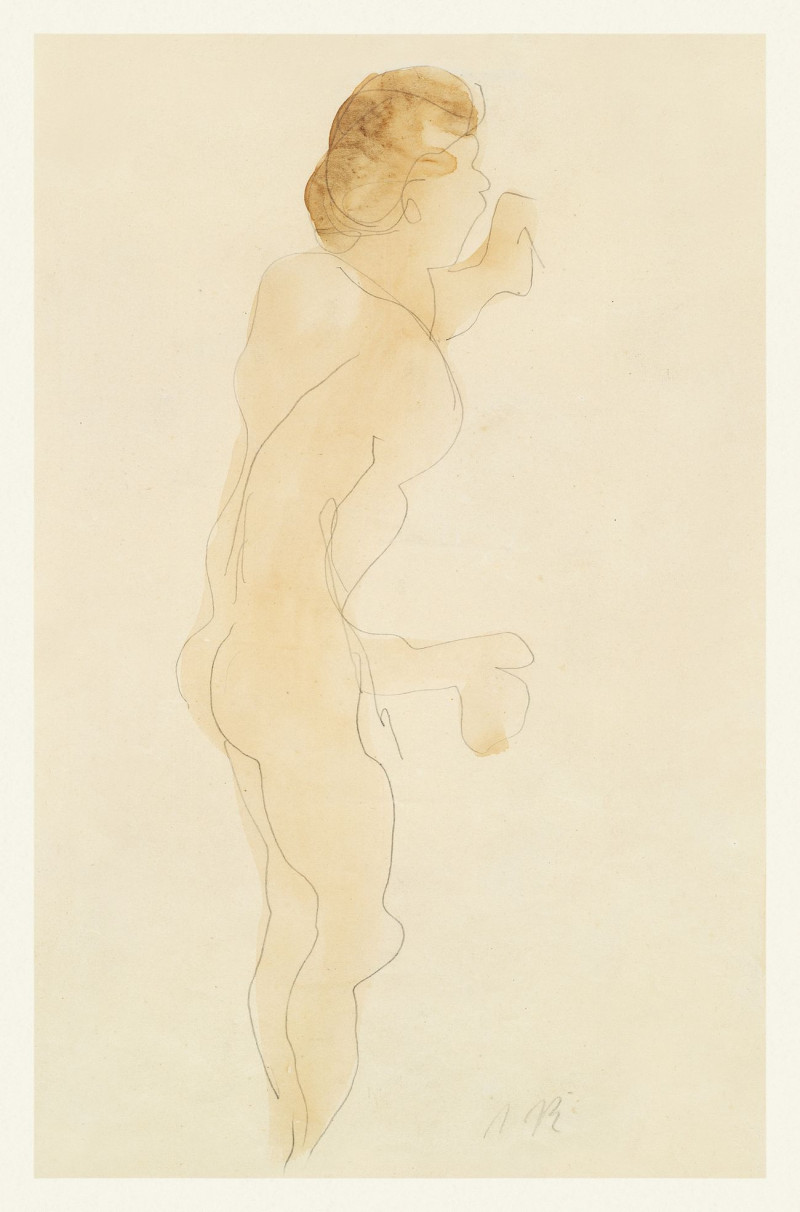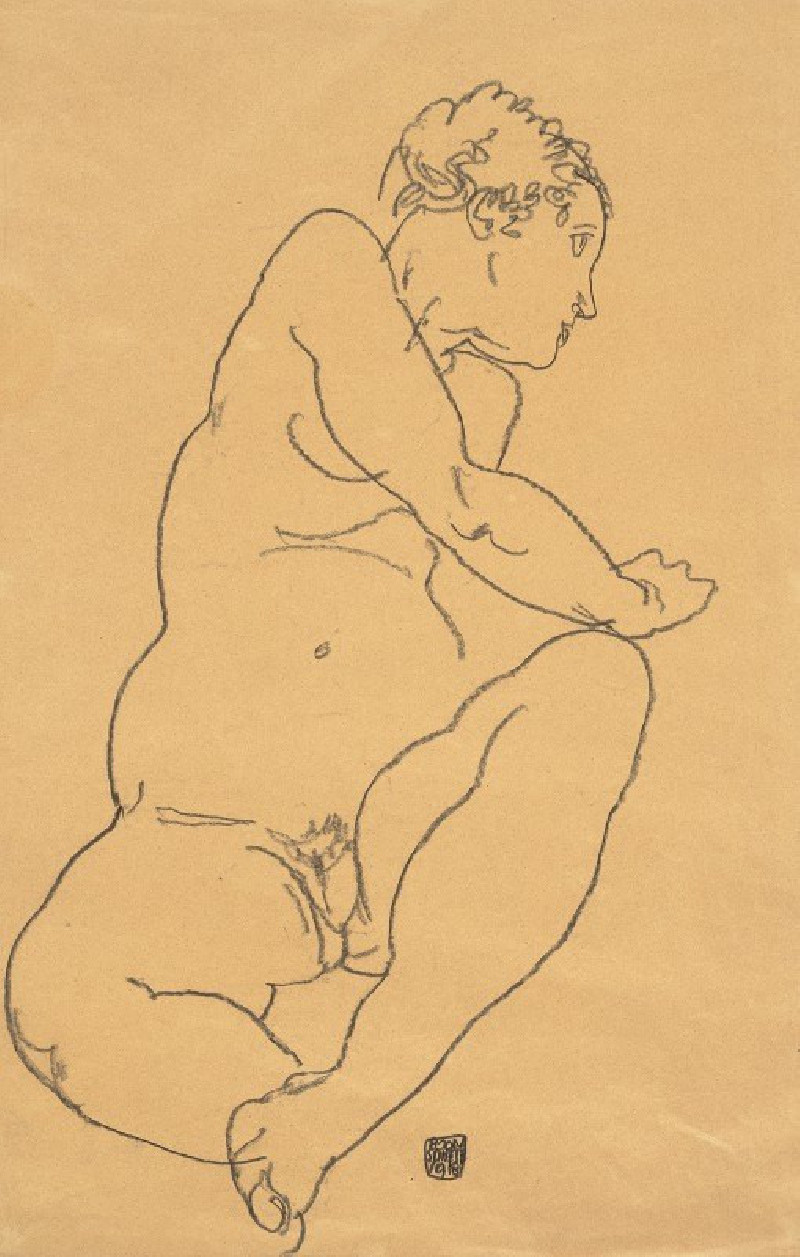Nude with a Mirror, Standing Before a Washstand (1908-1910)
Technique: Giclée quality print
Recommended by our customers
More about this artwork
Ernst Ludwig Kirchner's evocative drawing "Nude with a Mirror, Standing Before a Washstand" (1908-1910) showcases the artist’s distinctive style of expressive lines and a compelling exploration of form. This artwork, executed predominantly in ink, captures a moment of casual intimacy with a nude figure standing beside a washstand and looking into a mirror.In this piece, Kirchner's use of brisk, angular lines forms a dynamic portrait that is both raw and alive. The graphic quality of the drawing, characterized by its bold strokes and absence of color, emphasizes the angularity and movement inherent in the human form. This technique not only enhances the physicality of the nude figure but also the textural elements of the washstand and the mirror.This drawing exemplifies Kirchner’s interest in depicting the human body in different states of dress and undress, exploring themes of vulnerability, self-perception, and the private versus the public self. The simplicity of the setting, consisting of the figure, a washstand, and a circular mirror, invites viewers to focus on the interaction of the forms and the simplicity of the daily ritual portrayed."Nude with a Mirror, Standing Before a Washstand" is a striking example of Kirchner’s contribution to early 20th-century art, particularly within the German Expressionist movement, where emotional expression and the potential to provoke thought are more significant than realistic representation.
Delivery
Returns
Ernst Ludwig Kirchner (1880–1938) was one of the most important German Expressionist painters. He was a co-founder of Die Brücke, a group of German expressionist artists formed in Dresden in 1905. Die Brücke and Kirchner took inspiration from Vincent Van Gogh and Edvard Munch, as well as African and Oceanic art. They used woodblock printing as a medium to showcase their signature style: flat, unrealistic images with vivid colors. The recurring themes in Kirchner's artworks included exotic cultures, faraway landscapes, self-portraits, dancers and Berlin street life. His paintings and prints effectively portrayed non-European cultures despite the fact that he never traveled outside of Europe.

































